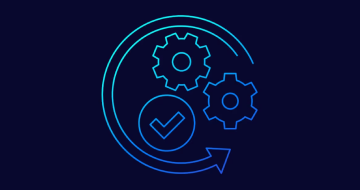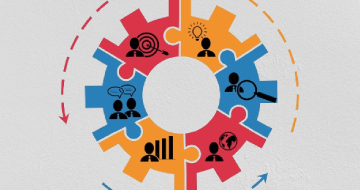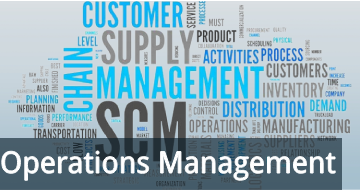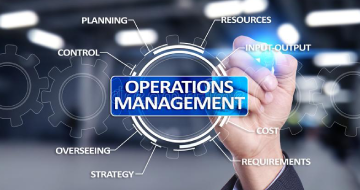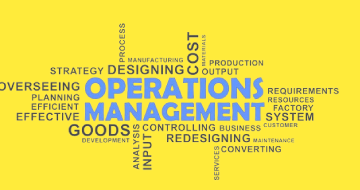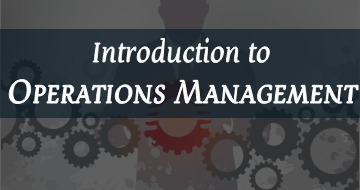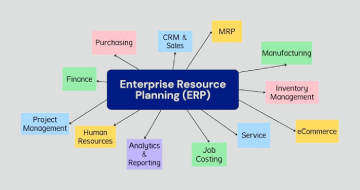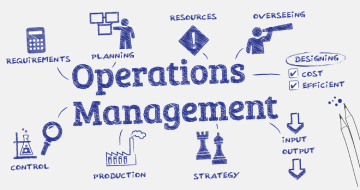IIRF Online > Business > Operations > Operations Management > The Operations Management Training Program
The Operations Management Training Program by Udemy
Turning Ordinary Businesses into Operational Titans
Course Highlights
- Master techniques to streamline operations and enhance efficiency.
- Understand end-to-end supply chain strategies for optimal results.
- Learn best practices for inventory management and demand forecasting.
- Grasp tools and methodologies for maintaining product and service quality.
- Develop skills to allocate resources effectively in diverse scenarios.
- Harness data-driven insights to make informed operational decisions.
Skills you will learn!
Curriculum
4 Topics
Program Overview
Effective Learning
Course Choice Skill Development and Prior Knowledge
FAQs
26 Topics
Section Overview
The Key Functions of Operations Management
Key Areas of Decision-making in Operations Management
The Science of Better Learning
What operations management means
Eight functions of operations management
Operations Management Key Functions
Operations in Service and Manufacturing Organizations
Manufacturing and services contrasted
Overlapping services and manufacturing
Operations in Service and Manufacturing Organizations
Organizational and Operations Strategy
The Four-phase Process of Formulating Strategy
Organizational strategy
Formulating strategy
Manufacturing operations strategies
Services operations strategies
Organizational and Operations Strategy
The Transformation Model
The transformation model
Four kinds of transformations
Identifying Business Transformations
The Transformation Model
Operations Management and the Organization
Course project (optional)
Operations Management and the Organization
21 Topics
Section Overview
The Product and Service Life Cycle
The Product Life Cycle
Introduction to the product life cycle
Actions for product life cycle stages
The Product and Service Life Cycle
Developing New Products and Services
Preparing a Business Case
Introduction to new product development
The new product development process
Best practices in new product development process
New Products and Services Development
Managing Existing and Mature Products and Services
Strategic Approaches for Managing Existing and Mature Products and Services
Maintenance strategy
Revitalization strategy
Rationalization strategy
Managing Existing and Mature Products and Services
Course project (optional)
Product and Service Management
Product and Service Management
23 Topics
Section Overview
Understanding the Supply Chain
5 Key Components of the Supply Chain
Supply Chain Management in Service Organizations
Advantages of Supply Chain Management
The Supply Chain
Drivers of Supply Chain Management
Supply Chain Management in Service Organizations
Supply Chain Characteristics
Supply Chain Management
Supply Chain Strategies
Supply Chain Organizational Strategies
Logistics Strategies
Logistics Strategies
Supply Chain Strategies
Measuring Supply Chain Performance
Performance Measurement
Understanding Performance Measurement
Methods of Performance Measurement
Measuring Supply Chain Performance
Course project (optional)
Supply Chain Management
Supply Chain Management
28 Topics
Section Overview
Understanding Inventory
Advantages of Managing Inventory
Types of Inventory
Understanding Inventory Management
Inventory Management in Services
Inventory Value and Cost
Inventory Costs
Inventory Valuation Methods
Types of Inventory Costs
The Value and Cost of Inventory
Inventory and Economic Order Quantity
Inventory Life-Cycle
Economic Order Quantity (EOQ)
Reorder Point (ROP)
Inventory and Economic Order Quantity
Inventory Management Tools
Inventory Management Tools Table
ABC Analysis
Material Requirements Planning (MRP)
Enterprise Resource Planning (ERP)
Calculating EOQ and ROP
Just-in-Time (JIT)
Inventory Management Tools
Course Project (optional)
Inventory Management
Inventory Management
Concepts Insights and Inquiries
24 Topics
Section Overview
The Characteristics of Demand
What Demand and Supply Are
Recognizing Demand Trends
The Characteristics of Demand
Demand Forecasting
Defining Demand Forecasting
The Four Variables of Demand Forecasting
Steps in the Demand Forecasting Process
Two Types of Demand Forecasting Models
Qualitative and Quantitative Methods
Forecasting Demand
The Stages of the Demand Forecasting Process
Capacity Management
Defining Capacity
Level Capacity Management Strategy
Chase Demand Strategy
Characteristics of the Three Substrategies of Chase Demand Strategy
Demand Management Strategy
Evaluating Capacity Management Strategies
Managing Capacity
Course Project (optional)
Forecasting and Capacity Planning
Forecasting and Capacity Planning
25 Topics
Section Overview
Operations Planning and Scheduling
The Levels of Planning
Scheduling in Operations Management
Levels of Planning and Scheduling
Operations Planning and Scheduling
Scheduling of Staffing in a Service Environment
Work Schedule Formulas
Challenges in Employee Scheduling
Scheduling Work Shifts
Scheduling Criteria and Methods
Scheduling Staff in a Service Environment
Loading and Sequencing
Shortest Processing Time Schedule
Loading Work Centers
Loading and Sequencing
Job Sequences
Sequencing rules
Critical Ratio
Sequencing Jobs
Job Processing and Due Dates
Critical Ratio Calculations
Course Project (optional)
Operations Scheduling
Operations Scheduling
29 Topics
Section Overview
Quality in Manufacturing and Service Operations
Differences in Quality between Manufacturing and Service Operations
What is Quality?
Benefits of Quality Management
Quality in Manufacturing and Services
Quality Performance Objectives and Measures
Measurement of Quality Performance
Quality Performance Indicators
Measuring Quality Performance
Quality Performance Indicators
Quality Management Principles
Quality Management Principles
Principles of Quality Management
The Role of Quality Principles
Quality Principles
Transformation Model and Quality Management
Transformation Model
Quality Management Transformation Model
Quality Management Strategies
Transformation Model: Input Phase
Transformation Model: Processing Phase
Transformation Model: Output Phase
Customer Satisfaction
Other Quality Strategies
Course Project (optional)
Management of Quality in Operations
Management of Quality in Operations
Practical Activity: Quality Performance Evaluation
26 Topics
Section Overview
Introduction to Facilities Management
The Importance of Facilities Management
Facilities Management Clients
The Meaning and Causes of Churn
Introduction to Facilities Management
Strategic Considerations for Facilities Management
Steps in Developing a Facilities Management Strategic Plan
Different Facilities Management Styles
Developing a Facilities Strategy
Strategic Considerations for Facilities Management
Location and Layout of Facilities
Facilities Location and Layout
Identifying Business Layout
Facilities Location Decisions
Facilities Layout Decisions
Facilities Management for Service Organizations
Location Planning for Service Organizations
Location Issues for Services
Layout Issues for Services
Facilities Management for Service Organizations
Facilities Planning and Management
Facilities Planning and Management
The Operations Management Training Program
Takeaways Practical Applications and Endorsements
What's next?

The Operations Management Training Program
